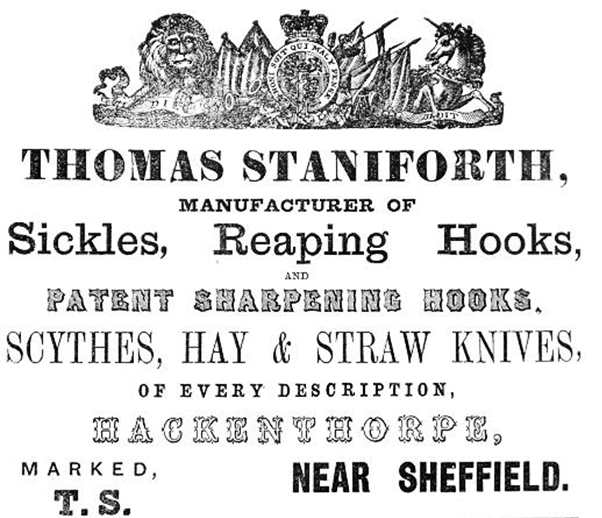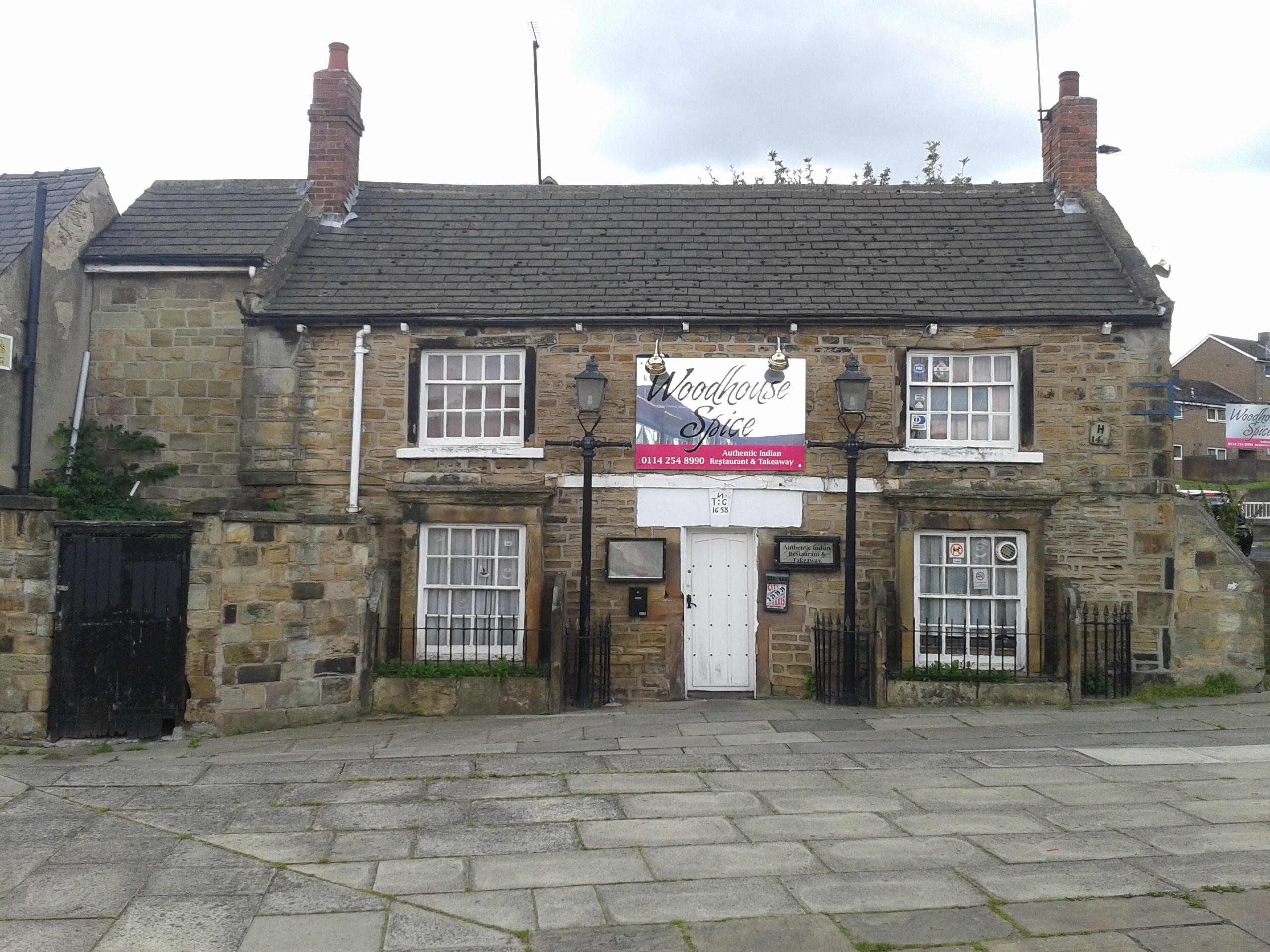
Thomas Staniforth & Co. Sickle works at Hackenthorpe.
 The Cross Daggers, Woodhouse
The Cross Daggers, Woodhouse
John Staniforth, was baptised on June 19th, 1768 at St. Mary’s Church, Beighton. His parents were William Staniforth and Mary Westby, his grandparents were William Staniforth and Anne Barnsley and his Great Grandparents were Samuel Staniforth and Mary Tompson. His grandfather was the brother of Hackenthorpe Sicklesmith Thomas Staniforth.
As a young boy, John was apprenticed to his cousin Thomas Staniforth as a Sicklesmith at his Sickleworks. He completed this apprenticeship in 1791 and he married Mary Hurt later that year.
In total the couple had Six Daughters and three sons:
Following the birth of their last child Sarah, the family moved from Hackenthorpe to the neighbouring village of Woodhouse. Two of Mary’s surviving brothers were both farmers and they could have likely lent the couple a cart to transport their possessions across the Shire Brook and up the hill into the village.
In 1770 Mary’s father Joseph Hurt had inherited a dwelling house in Woodhouse ‘now in the possession of Samuel Frith’ but he does not appear to have ever lived there and in 1786 he died. According to a map drawn by William James Le Tall, a local Woodhouse historian, Samuel Frith (either the same man, or his son) was the publican at the Cross Daggers Inn, however less than a quarter of a mile away facing the village green is a cottage marked ‘Mr Potter then Wm. Hurt’. This was likely Mary’s eldest brother William Hurt. He died in 1818 in Hackenthorpe, but it seems likely that when John and Mary moved to Woodhouse, that they resided in this same house. The home stood at the mouth of Stubbin Lane.
John Staniforth died shortly before Christmas, and was buried at his native parish of St. Mary’s Beighton on December 22nd, 1813. One source states that John had been a Sicklegrinder. In 1819 Dr Arnold Knight read a paper before the Medical and Surgical Society of Sheffield in which he states that ‘…Out of 2,500 grinders there are not 35 who have arrived at the age of 50 years, and perhaps not double that number who have reached the age of 45’. The cause of death was usually ‘Grinders asthma’ It seems likely that this was the cause of John Staniforth’s early death.
If this was the cause, it was likely that John would have been a sick man years before he left Hackenthorpe for Woodhouse. It could even be suggest that Mary might have asked John to move due to his failing health, and that she felt the move would improve his condition. In a deed dated 1827, John is referred to as ‘Of Handsworth Woodhouse, Stone Mason, Deceased’. A Stone Mason in those days would have suffered similar ailments, so the change of work would have made little difference.
Mary was now left a widow at the age of 41, with eight children to look after, with the youngest being younger than 18 months old.
It is interesting to note that on the daughter’s marriage records, each daughter signs their name, but the groom simply leaves a mark, showing the Staniforth family clearly felt that literacy was a valuable skill.
In a book published by John Thomas in 1831 titled Walks in the Neighbourhood of Sheffield, when on his way from Sheffield to Laughton-en-le-Morthen, he writes:
Woodhouse is entered by its market-place. There is nothing in this place to delay the pedestrian; but grateful experience reminds me to hint to him, if the sun have burned, or the wind and dust parched him, that there, at the house of the notable Mary Staniforth, ale and eggs, courtesy and cleanliness may be found in excellence and abundance
Mary Staniforth was now the victualler of the Cross Daggers Inn, this is the place described, as it faces the Market Cross in Woodhouse. She must have ran the Inn for a number of years, as she is described as ‘notable’.
In 1832 the youngest daughter Sarah married Peter Potter Birks. The Birks family had lived in woodhouse since the second half of the 16th Century. Peter was a farmer and tanner and the tanyard he founded remained in business until 1906. Sarah was his second wife as he had previously been married to Margaret Hodgson, but she had died leaving him with two girls, Louisa and Margaret, aged 6 and 3. Sarah had 13 children with Peter.
The last of Mary and John’s children to marry was Thomas Staniforth, he married Mary Linley in 1834, the daughter of Joseph Linley, a local cordwainer or shoemaker, and shopkeeper. His father and Grandfather had both been Butchers in Woodhouse, and on Le Tall’s map, the building next door but one to William Hurt’s is labelled ‘William Linley, Butcher’.
On the 1841 Census, Mary describes herself as ‘Widow – Independent’. She dies eight years later and was buried in the Society of Friends Burial Ground at Woodhouse as a ‘Non-Member’. This was the same burial ground that William James Le Tall himself would be buried at in 1904, along with his brother Frederick Le Tall in 1887. William James Le Tall married Mary Staniforth, and she too was buried there.